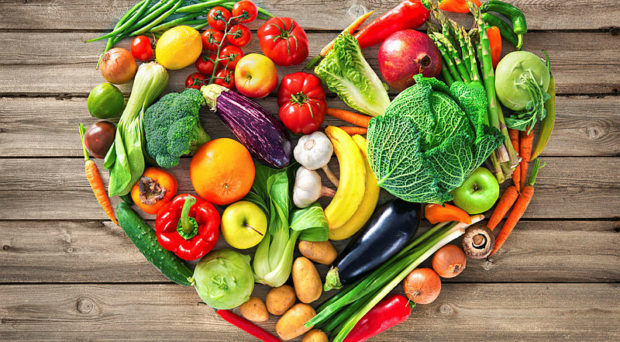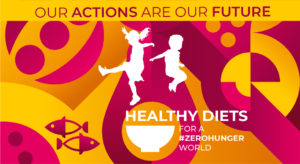
According to the United Nations Food and Agriculture Organization (FAO), there are now more people in the world who are obese than are malnourished. Unhealthy diets and sedentary lifestyles are now the biggest risk factor for disability and death worldwide.
Food diversity is reducing, which means that the food supply is more vulnerable to climate change
Food diversity is reducing, which means that the food supply is more vulnerable to climate change, and environmental damage from farming animals for meat and dairy is increasing. For World Food Day 2019, the FAO is calling on everyone to eat a healthy and sustainable diet.
However, many people lack the knowledge, resources or motivation to eat healthy diets. To mark World Food Day, let’s take a look at some of the studies registered at the ISRCTN registry that are investigating the best ways to improve this situation.
Changing young minds
Food habits and preferences are established early in life, so it’s vital that children are encouraged to eat healthily. The FAN study investigated eating behaviours in children aged 6-12 years in Switzerland.
Adherence to dietary guidelines was low, with 0% of the 568 children eating the recommended three portions of vegetables per day during the 7 days of observation. Children eating at home with their family (as opposed to at school with their peers or eating out with their family) consumed more vegetables and less sweets and soft drinks.

The Norwegian School Meal Project provided children aged 10-12 years with a free healthy lunch every day for a school year. These children chose to eat significantly more fruit, vegetables and fish after 6 months compared with children who continued to bring a packed lunch to school.
A second study is investigating an approach to increase adherence to the Norwegian national guidelines for food provided in schools with training and empowerment of ‘food ambassadors’ who will drive improvement.
Another study in Norway is looking at ways to reduce suspicion of unfamiliar foods in 1-year-olds at kindergarten and encourage them to eat a range of vegetables (protocol in BMC Pediatrics). The children’s dietary variety and food avoidance will be measured when they are 3 and 4 years old.
The MyHeARTBEaT study involves school canteens in Malaysia subsidising fruit, vegetables and healthy snacks, offering healthier meals and providing free drinking water. The effects on food intake, BMI and waist circumference will be assessed in 14-year-old students.
Empowering marginalised people
In the US, children in rural communities and children from minority ethnic groups are more at risk of obesity. A feasibility study provided an 11-week Generations Health program of daily activities encouraging physical activity, nutrition, sleep, and reducing TV/screen time to children aged 6-9 at a rural American Indian reservation.
Compared with children who continued with their usual out-of-school program activities, those who participated in the Generations Health program ate fewer calories and healthier food. They also showed reductions in age-adjusted BMI, while the control group’s average BMI increased (results in Pilot and Feasibility Studies).

The OPREVENT study investigated an intervention targeting adults who are the main purchasers or preparers of food in their household and delivered at food shops, schools and workplaces serving a mainly Native American population.
This pilot study demonstrated only modest improvements in healthy behaviours, but the lessons have been applied to the design of the full-scale OPREVENT2 study (protocol in BMC Public Health).
In South Korea, the 3 Healthy Study is testing a 12-week healthy lifestyle intervention that will provide disadvantaged children and their parents with education and support to change behaviours influencing childhood obesity.
Nudges to eat healthily and lose weight
Organizations can ‘nudge’ individuals to make better food choices. A UK study in canteens for supermarket distribution center workers is comparing the effect on calories purchased of two such interventions.
The first intervention is to increase the proportion of healthy meals and items and reduce the availability of higher-calorie options. The second intervention will reduce the portion size of higher-calorie foods by at least 10%, with a commensurate reduction in price.

A study using the University of Oxford’s virtual online supermarket shopping (OLS) platform revealed that moving lower-fat products to the top of lists reduced the percentage of energy derived from saturated fat from about 25% to 20% (results in International Journal of Behavioral Nutrition and Physical Activity).
Technology can also help to motivate healthier behavior. A feasibility study involving the ImpulsePal app suggested that people found using the app helpful when they experienced cravings for unhealthy foods or urges to overeat.
The Ayogo app enables people to log their food intake, weight and activity and to interact with other users in a social media setting. A study in adults attending a weight-loss program at a US bariatric clinic will compare weight loss after 3 months in those who used the app and those who did not.
Take home message

If our blog has inspired you, why not check out the FAO’s healthy eating suggestions or attend a World Food Day event?
Comments